#Extremophiles
Explore tagged Tumblr posts
Text
Earth is space Australia: Extremophiles
I love this idea. I can't help but wonder how aliens would react to Extremophile species (a species that thrives in extreme environments).
Like, perhaps earth is already considered an "extreme" planet. And humans are already considered by the rest of the galaxy to be an extremophilic species ("Humans can survive nearly anything. It's quite intriguing/fascinating." - a viewpoint shared by many humanologists) and at some point some human crew members are approached by the rest of the crew...
"Is there anything you humans can't survive? You seem to be quite a hardy species," Quarm states. Xe is simply a curious individual.
"What, us? We're actually kinda weak when it really comes to it. I mean, sure we can adapt to most environments, but there's some places that even we can't handle for very long. Like the vacuum of space. Or in volcanoes." Answers human Josefine.
"Or the ocean vents!" Another of the human crew, Steven, adds.
"Yeah, those too!"
Quarm chuckles just a bit, "ah, but that isn't an expectation of any species. Such extreme heat and pressures are simply inhospitable to any individual."
"I mean, pretty much, yeah..." the human's response is concerning to Quarm.
"Human Josefine... why are you saying it like that..?" Quarm isn't sure they want the answer.
"I mean... extremophilic species are a thing that exist."
"Extrem- Are.... Are humans... not? Extremophiles???"
"Uhhh No??"
Quarm wasn't ready for his next question to be answered, but that's a given for any question about the Humans' Homeworld.
"Then... What is?"
"I mean, tardigrades can survive in a vacuum... I’m not really the person to answer this. Steve?"
Human Steve smiled broadly as he began his rant about iron-shelled Snails that live in Volcanoes, varying deep-ocean species (that all seem alien in and of themselves), and several others.
Quarm is now incredibly fearful for these "Docuseries" human Steve is wanting to share...
#humans are weird#earth is a deathworld#earth is space australia#humans are space orcs#extremophile#extremophiles
2K notes
·
View notes
Text
41 notes
·
View notes
Text

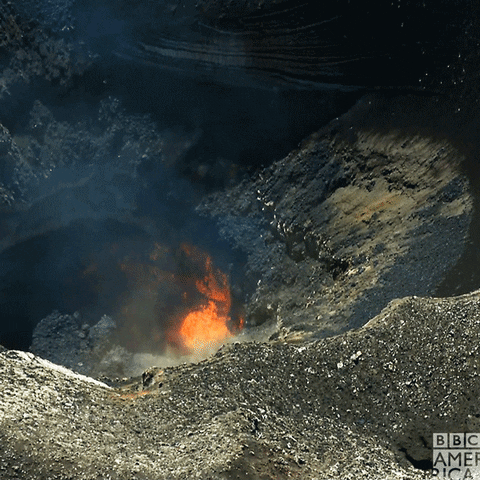
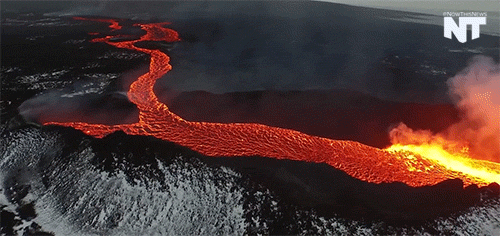
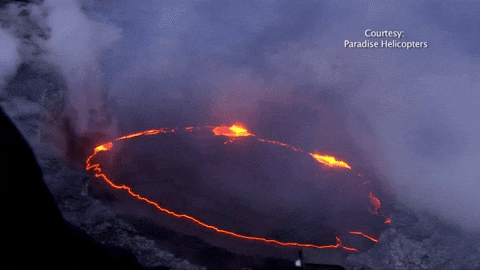

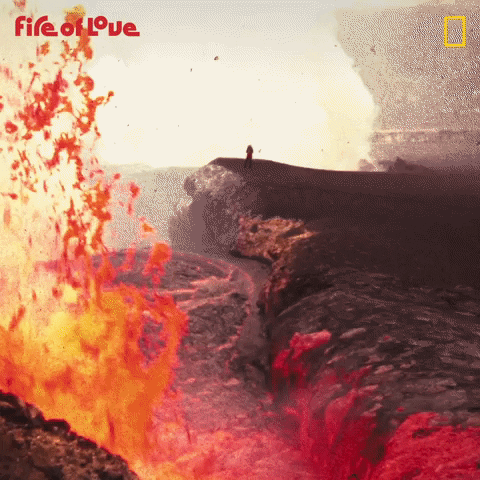

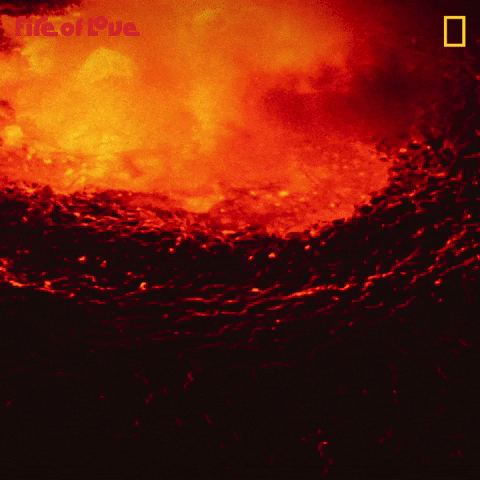

The evolutionary trajectory of life on Earth has consistently challenged preconceived notions regarding the boundaries of biological viability. From the abyssal depths where chemosynthetic ecosystems flourish in the absence of solar radiation, to the hyperacidic geothermal springs where extremophiles exploit sulfur-based metabolic pathways, to the radiologically contaminated zones where fungal organisms appear to harness ionizing radiation through melanin-mediated processes, life has demonstrated remarkable plasticity in colonizing environments previously deemed sterile. This paradigmatic expansion of the habitable envelope naturally raises a provocative question: if biological systems can withstand the vacuum of space, lethal radiation doses, and corrosive chemical matrices, what fundamental constraints preclude the existence of life within molten silicate matrices—commonly known as lava?
Distinguishing Extreme Environments from Thermodynamically Prohibitive Conditions
To address this question rigorously, it is essential to establish a clear demarcation between environments that impose severe physiological stress and those that fundamentally disrupt molecular architecture. Lava represents molten silicate material with temperatures typically ranging from 973 to 1473 Kelvin (700°C to 1,200°C or 1,292°F to 2,192°F), creating conditions that exceed the thermal stability thresholds of all known biomolecules. This temperature regime does not merely stress biological systems—it induces catastrophic molecular dissociation and structural denaturation.
The thermodynamic reality of molten rock environments differs qualitatively from other extreme conditions. While ionizing radiation can cause DNA strand breaks that are potentially repairable through enzymatic mechanisms, and vacuum conditions can be survived through cryptobiotic states that suspend metabolic activity, the thermal energy present in lava fundamentally disrupts the covalent bonds that maintain molecular integrity. This represents a transition from survivable stress to inevitable molecular decomposition.
Biochemical Constraints of Carbon-Based Life
Contemporary terrestrial biology operates within a relatively narrow thermodynamic window defined by the stability of carbon-hydrogen bonds, phosphodiester linkages in nucleic acids, and the hydrophobic interactions that stabilize protein tertiary structure. Even the most thermoresistant extremophiles operate within these fundamental constraints. Methanopyrus kandleri, representing the current temperature record-holder among hyperthermophiles, maintains viability at 395 Kelvin (122°C) through specialized heat-shock proteins and thermostable enzyme variants, yet remains orders of magnitude below lava temperatures.
The molecular basis of this limitation is well-characterized. DNA undergoes thermal denaturation at approximately 368 Kelvin (95°C) under physiological conditions, while cell membrane phospholipids experience phase transitions that compromise barrier function well below 423 Kelvin (150°C). Even the most thermostable proteins, such as those found in hyperthermophilic archaea, lose catalytic function at temperatures that represent merely the lower bounds of molten rock environments.
However, this analysis is predicated upon the assumption that life universally adheres to terrestrial biochemical paradigms. The emerging field of astrobiology has increasingly challenged anthropocentric definitions of biological possibility, suggesting that alternative bio-chemistries might operate under fundamentally different thermodynamic constraints.
Alternative Biochemical Frameworks and Exotic Life Scenarios
The potential for non-carbon-based life has garnered serious consideration within the astrobiological community, particularly regarding silicon-based biochemistry. Silicon, sharing carbon's tetravalent bonding capacity, theoretically enables the formation of complex molecular architectures while potentially offering superior thermal stability. Silicon-oxygen bonds (Si-O) possess higher bond dissociation energies compared to carbon-hydrogen bonds, suggesting that silicon-based polymers might maintain structural integrity at elevated temperatures. However, silicon chemistry also presents significant limitations, including reduced structural flexibility and a tendency toward crystallization rather than the formation of dynamic, self-organizing systems characteristic of carbon-based life.
Beyond alternative elemental foundations, theoretical frameworks have been proposed for organisms incorporating inorganic protective matrices. Terrestrial precedent exists in biomineralizing organisms such as magnetotactic bacteria, which precipitate magnetite nanoparticles, and diatoms, which construct intricate silica frustules. Extrapolating from these examples, hypothetical organisms might evolve refractory ceramic or metallic shells capable of providing thermal insulation against extreme temperature gradients.
Recent discoveries have expanded our understanding of extremophile capabilities in ways that inform this discussion. The identification of radiotrophic fungi in the Chernobyl Exclusion Zone, which appear to metabolize ionizing radiation through melanin-mediated electron transport chains, demonstrates that life can not only survive but potentially thrive by exploiting energy sources previously considered universally destructive. Similarly, the rapid evolution of plastic-metabolizing bacteria in marine environments illustrates the remarkable adaptability of biological systems to novel chemical landscapes.
Transient Survivability and Cryptobiotic Strategies
A more plausible scenario for life's interaction with lava environments involves transient rather than permanent exposure. Many extremophiles employ cryptobiotic strategies—reversible metabolic suspension coupled with enhanced molecular protection—to survive otherwise lethal conditions. Tardigrades exemplify this approach, entering a desiccated "tun" state while producing damage-suppressing proteins and trehalose disaccharides that stabilize cellular structures during cryptobiosis.
Bacterial endospores represent perhaps the most relevant analogue for potential lava survival. These dormant structures, surrounded by multiple protective coats including calcium dipicolinate deposits, can withstand temperatures exceeding 393 Kelvin (120°C) for extended periods. Theoretical extensions of this strategy might enable organisms to survive brief transits through molten environments while in extreme cryptobiotic states, potentially reactivating within cooling lava tubes or solidified volcanic substrates rich in chemically accessible minerals.
Microenvironmental Niches and Thermal Gradients
The assumption that lava presents a uniformly lethal environment may itself be overly simplistic. Volcanic systems create complex thermal gradients with numerous microenvironments that might fall within the expanded tolerance ranges of extremophile organisms. Lava tubes, formed by the drainage of molten rock from beneath solidified crusts, can maintain moderate temperatures while providing access to mineral-rich substrates and potentially reducing atmospheric conditions. Similarly, the interfaces between active lava flows and ambient environments create steep thermal gradients where temperatures might transitionally approach the upper limits of hyperthermophile tolerance.
Subglacial volcanic systems present particularly intriguing possibilities. In these environments, the interaction between molten rock and ice creates complex thermal and chemical gradients, potentially generating microenvironments with temperatures compatible with extremophile survival while providing access to both oxidized and reduced chemical species for metabolic exploitation.
Geochemical Considerations and Deep Crustal Environments
The boundary between "lava" and "hot rock" is not merely semantic but reflects important distinctions in habitability potential. While actively molten rock exceeds known biological tolerance limits, the cooling and crystallization process creates a continuum of environments with varying thermal and chemical properties. Recent investigations of deep crustal microbial communities have revealed active biological processes at depths exceeding 5 kilometers, where temperatures approach 353 Kelvin (80°C) and pressure exceeds 50 megapascals.
These discoveries suggest that the transition zone between molten and solid rock—the crystallization front—might represent a previously unconsidered habitat. As cooling magma transitions from liquid to solid phases, it creates chemical gradients, gas evolution, and mineral precipitation that could potentially support specialized extremophile communities adapted to exploit these dynamic geochemical processes.
Synthesis and Future Directions
While current thermodynamic principles and biochemical knowledge suggest that conventional carbon-based life cannot maintain active metabolism within actively molten silicate environments, several theoretical pathways remain unexplored. These include:
alternative biochemistries operating at elevated temperature ranges
cryptobiotic survival strategies enabling transient exposure to extreme thermal conditions
exploitation of microenvironmental niches within complex volcanic systems
The question of life's ultimate temperature limits intersects with broader philosophical issues regarding the universality of terrestrial biochemical paradigms. As astrobiology continues to expand our conception of habitable environments—from the methane lakes of Titan to the sulfuric acid clouds of Venus to the subsurface oceans of Europa and Enceladus—the dismissal of any extreme environment as definitively uninhabitable requires increasingly rigorous justification.
The emerging understanding that life can exploit energy sources as diverse as ionizing radiation, methane seepage, and hydrogen sulfide suggests that our current models of biological impossibility may be overly conservative. While the direct colonization of actively molten rock remains highly improbable given known biochemical constraints, the complex thermal, chemical, and physical gradients associated with volcanic systems present numerous opportunities for life to approach—and potentially breach—previously assumed thermodynamic boundaries.
Future investigations might profitably focus on the systematic characterization of thermal gradients within volcanic systems, the laboratory evolution of hyperthermophile organisms under progressively elevated temperature regimes, and the theoretical modeling of alternative biochemistries capable of maintaining functionality at extreme temperatures. As our understanding of life's fundamental limits continues to evolve, the boundary between the possible and impossible remains not fixed, but perpetually expanding.
The ultimate question may not be whether life can survive in lava, but rather how closely life can approach the thermodynamic limits of molecular stability—and what new definitions of "life" might emerge from these investigations.
#lava#eruption#volcanoes#extremophiles#astrobiology#lava and life#life in extreme environments#noncarbon based life#science speculation#limits of life#thermophiles#what if biology#lava microbes#science writing#volcano science#origin of life#space biology#biochemistry#alien life theory#microbial survival#astrogeology#scientific curiosity#uncharted biology#frontiers of science#science and wonder#life always finds a way#science#gifs#stim gifs#lava stim
12 notes
·
View notes
Note
"ice crawlers" are insects found exclusively in extremely cold environments. they die at like 10 degrees C
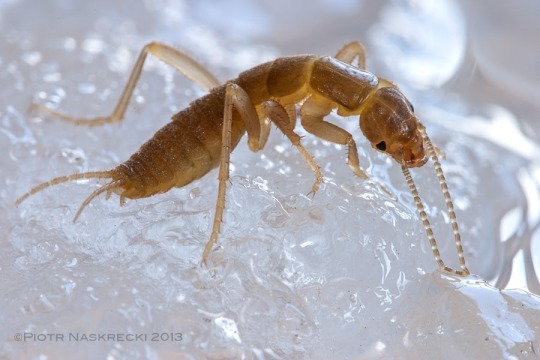
i like them because they look so sad to have been dealt this evolutionary hand. they will never know the warmth of a sunbeam 🤣
ohhhh they wanna be earwig-crickets so bad
22 notes
·
View notes
Note
https://explorersweb.com/lichen-survives-space/ <- this seems like something you would find cool (in case you haven't seen it yet). lichen survives space!!
Good job, little guys! Very proud of you! But this isn't the first times lichens have survived in space or survived space-like conditions.
Lichens Survive in Space: Results from the 2005 LICHENS Experiment
Characterization of Viability of the Lichen Buellia frigida After 1.5 Years in Space on the International Space Station
Lichen Vitality After a Space Flight on Board the EXPOSE-R2 Facility Outside the International Space Station: Results of the Biology and Mars Experiment
Viability of the lichen Xanthoria elegans and its symbionts after 18 months of space exposure and simulated Mars conditions on the ISS
Survival of lichens and bacteria exposed to outer space conditions -Results of the Lithopanspermia experiments
Whole Lichen Thalli Survive Exposure to Space Conditions: Results of Lithopanspermia Experiment with Aspicilia fruticulosa
Some lichens are so good at surviving extreme conditions that some of the most common experiments done on them are basically *put lichen in situation* *observe reaction*. I am analyzing some data right now where we subjected lichens to salt stress. Maybe I admire lichens so much because my response to any amount of change to my environment is cry?
#lichen#lichens#extremophiles#lichens in space#space#astrobiology#lichenology#lichenologist#science#science side of tumblr#I love studying lichens#I admire them so much#just little guys
48 notes
·
View notes
Text
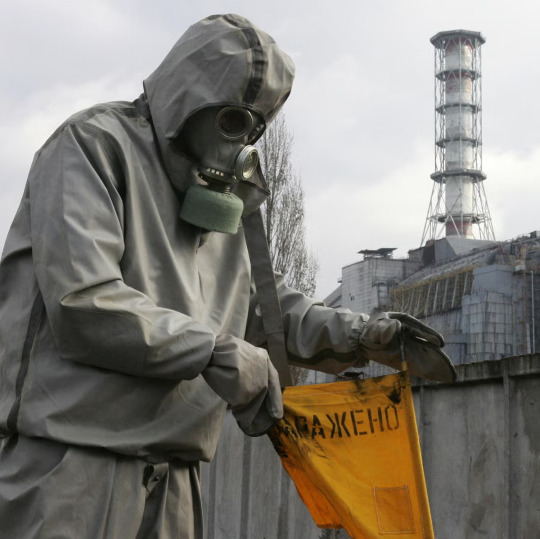

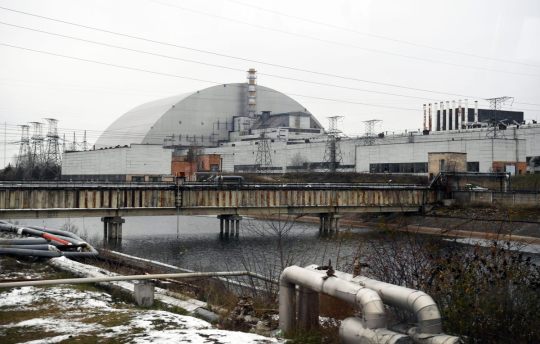
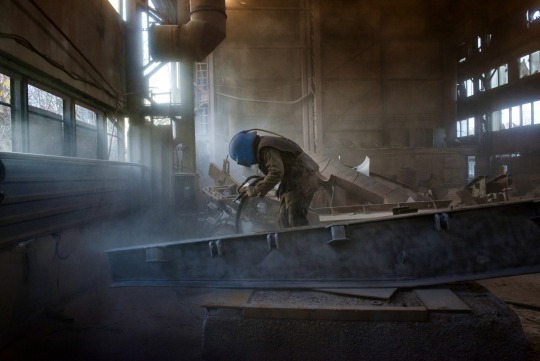
Inside the Chernobyl Exclusion Zone, scientists have discovered a black fungus capable of feeding on deadly gamma radiation.
Scientists believe this mechanism could be used to make biomimicking substances that both block radiation from penetrating and turn it into a renewable energy source. (x)
How it works:
Melanin and Radiation: The fungus contains melanin, a pigment also found in human skin, which appears to capture ionizing radiation and convert it into chemical energy—a process scientifically termed "radiosynthesis," somewhat analogous to photosynthesis in plants but using radiation instead of sunlight.
Radiotrophic Behavior: This extraordinary capability, known as "radiotrophic" behavior, allows the fungus to use radiation as an energy source to grow and sustain itself, even in high-radiation environments like the remnants of the Chernobyl Nuclear Power Plant.
Implications:
Bioremediation: These radiation-consuming fungi could potentially be used in cleaning up radioactive waste sites, offering a biological approach to absorbing and potentially neutralizing harmful radiation.
Space Exploration: Their remarkable ability to survive in extreme radiation environments makes them a fascinating subject for astrobiology. They could provide critical insights into the potential for life on radiation-exposed planets or help develop innovative strategies to protect astronauts from cosmic radiation during long-duration space missions.
Medicine and Research: The intricate mechanisms by which these fungi process and potentially harness radiation could inspire groundbreaking advances in radioprotective medicines, materials science, and our understanding of biological radiation resistance.
p.s. It's not just fungus. The overall family of extremophiles that live on or despite radiation includes both fungi and bacteria, and different species have different mechanisms for absorbing or tolerating radiation. (x)
#chernobyl#black fungus#cryptococcus neoformans#radiotrophic fungus#gamma radiation#radiation-eating fungus#extreme environments#science#biology#fungi#melanin#radiotrophy#chernobyl disaster#bioremediation#astrobiology#space exploration#extreme survival#radiation research#environmental science#radiation#microbiology#extremophiles#nature is metal#scientific discovery#weird science#organism adaptation#nuclear biology#biomimicry#research#technology
15 notes
·
View notes
Text

Challenge #04406-L022: Familiar Circumstances
This world is so cold our equipment fails often. The human is SO not built for this, with skin instead of fur, muscles instead of blubber. True their equipment never fails, but how is it, even with their suit, they never seem to feel the cold? -- Anon Guest
Every cogniscent species puts their home planet into what the Humans know as a "Goldilocks Zone" where everything is "just right" for life. It's almost natural for most cogniscents to go through an egocentric phase. That sort of thing usually ends when they encounter "impossible" cogniscents.
Humans are still having a very rough time with "impossible" cogniscents. Be gentle with them.
Helping "impossible" cogniscents is a little bit difficult for others, but that never stops the Humans. They've made their entire evolution about getting into places where they should not be able to survive.
[Check the source for the rest of the story]
6 notes
·
View notes
Text
#flamingo#birds#birdwatching#exotic birds#extremophiles#government drones#flamingos arent real grow up#theyre just fucking animatronics#“they can stand in boiling water” grow up#nothing can do that#idiot
2 notes
·
View notes
Text
youtube
more cool content from Deep Look!
#bugs#bugblr#insects#insect#bug#entomology#found elsewhere and uploaded by me#diptera#alkali flies#alkalinfly#mono lake#extremophiles#Youtube
26 notes
·
View notes
Text
Discussing Aliens and Origins with GPT-4o
The following is an AI generated article. It is the product of a “conversation” with ChatGPT’s most recent AI model, GPT-4o. I have been amazed at the human-like conversational abilities of this AI model. Through a series of prompts on the subject reflected in the title, which is mine, not AI generated, I was able to get GPT-4o to acknowledge the greater likelihood of special creation over the…

View On WordPress
#AI#Aliens#Astrobiology#Biblical Creation#Exoplanets#Extremophiles#GPT4o#Intelligent Design#Origins#Science Debate#Sentience#Special Creation#Tech Innovation
2 notes
·
View notes
Text
#tumblr polls#best thing ever#tournament poll#The feeling of jumping into cool water on a hot day#extremophiles
7 notes
·
View notes
Text
12 notes
·
View notes
Text
flamingos are extremophiles

You can’t look at these birds that can live in boiling salty alkaline water and not say they qualify as BEASTS.
6 notes
·
View notes
Note
After reading some of your posts for the last few days, the shoe finally dropped that the "Nonavian" in "Nonavian dinosaurs" is non avian and not an adjective relating to some scientist or period Nonave or Nonavius or something like that🤦♀️
But since I'm already here, do we know of any extremophile prehistoric dinosaurs (or suspect that one might be)?
Because I know that flamingos can live under very extreme situations, but I wonder if there was an older dino that could deal with environments like that.
Not that I’m aware of, it might be hard to determine from the fossil record
17 notes
·
View notes
Text
Did you know?🌿
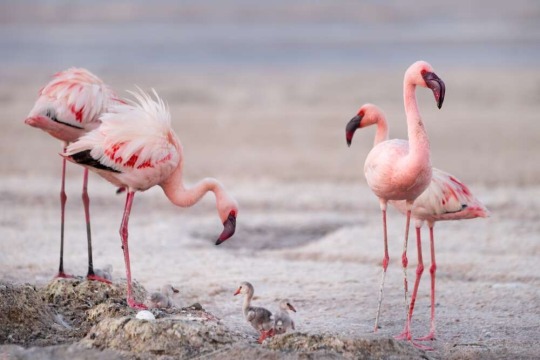
Flamingos are extremophiles, meaning they are a species capable of surviving in harsh environments. Flamingos can withstand direct UV exposure, as well as hot and cold climates. They’ve even been known to nest in corrosive lakebeds!
3 notes
·
View notes
Text
Extremophiles? In my bathroom?
2 notes
·
View notes